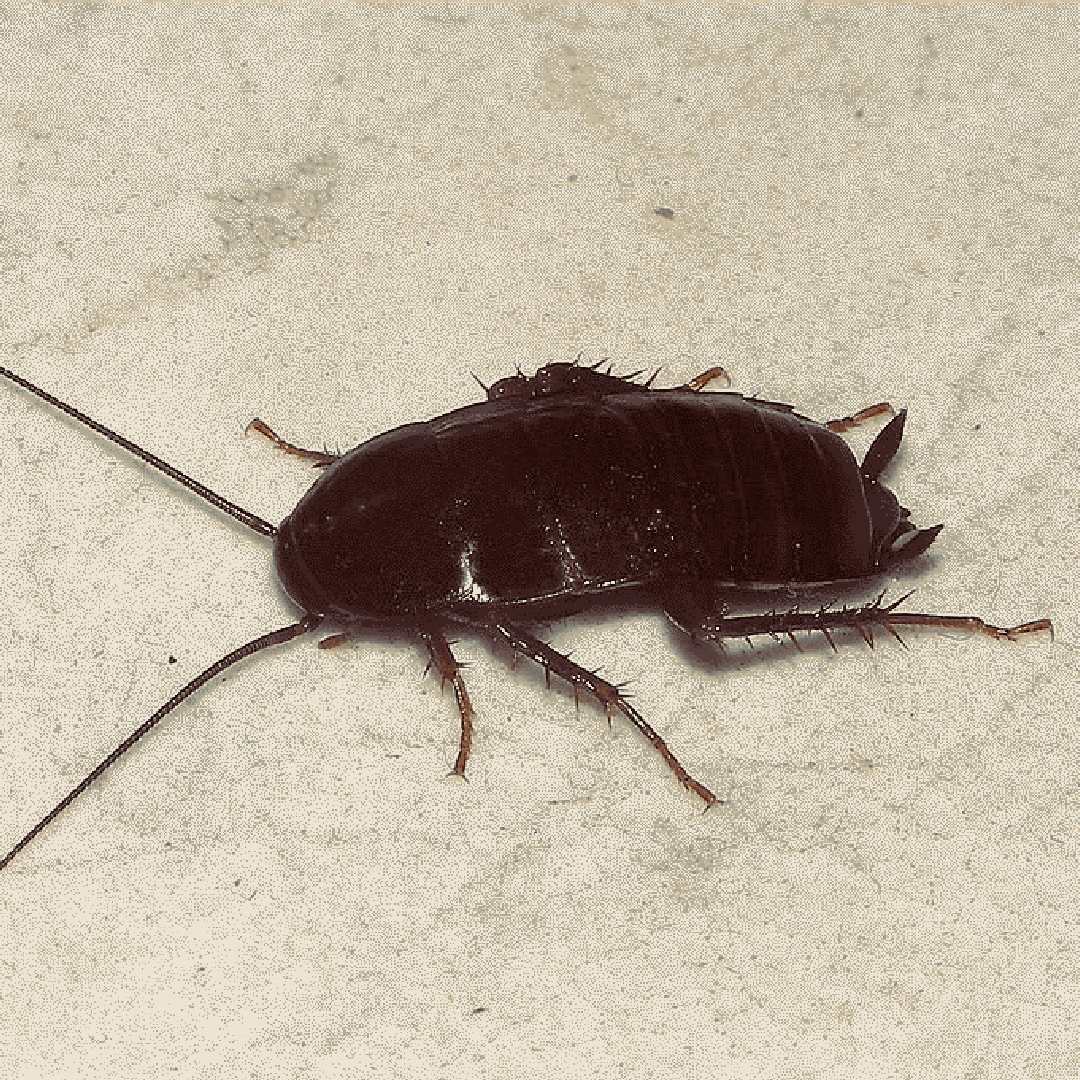Oriental Cockroach

Proud Supporter of Disabled Veterans
No Contracts
Services provided without written contracts.
Introduction to
Oriental cockroaches, also known as water bugs or black beetles, are one of the more notorious cockroach species due to their affinity for damp, dark environments and their ability to spread disease. This guide provides detailed information on how to recognize, understand, and manage oriental cockroaches, including preventive measures and professional pest control solutions.
Recognition
Oriental cockroaches are medium to large-sized cockroaches, measuring about 1 to 1.25 inches in length. They have shiny, dark brown to black bodies and are often mistaken for beetles due to their glossy appearance. Males have wings that cover about three-quarters of their bodies, while females have only small wing pads and are unable to fly. Both sexes have long, segmented antennae and spiny legs. Oriental cockroaches are often found in damp, dark areas such as basements, crawl spaces, and drains.
Biology
Oriental cockroaches belong to the family Blattidae and undergo incomplete metamorphosis, developing from eggs to nymphs to adults. Females produce egg cases (oothecae) containing about 16 eggs, which they deposit in warm, sheltered areas. The eggs hatch into nymphs, which resemble smaller versions of the adults but lack fully developed wings. Nymphs go through several molts before reaching maturity, a process that can take several months to over a year, depending on environmental conditions. Oriental cockroaches are scavengers and feed on a variety of organic materials, including decaying plant matter, garbage, and food scraps.
Habits
Oriental cockroaches are nocturnal and thrive in damp, dark environments. They are often found in basements, crawl spaces, sewers, drains, and around leaky pipes. Outdoors, they inhabit areas with heavy mulch, leaf litter, and other organic debris. Oriental cockroaches are slow-moving and prefer cooler temperatures compared to other cockroach species. They are known to emit a strong, unpleasant odor and can contaminate food and surfaces with bacteria and pathogens. Their presence can be detected by droppings, shed skins, and the distinctive musty smell they produce.
Prevention
Preventing oriental cockroach infestations involves reducing moisture and eliminating potential entry points. Use dehumidifiers in damp areas like basements and crawl spaces to keep these spaces dry. Fix any leaks or plumbing issues promptly to reduce excess moisture. Seal cracks and gaps around doors, windows, and foundations to prevent cockroaches from entering. Install door sweeps and weather stripping to block entry points. Keep gutters clean and ensure proper drainage around the home to avoid water accumulation. Regularly clean and declutter areas where cockroaches may hide, such as storage spaces and under sinks.
Professional
When oriental cockroaches become a persistent problem, professional pest control services can offer effective solutions. STL Pest Control provides comprehensive inspections and tailored treatment plans to address oriental cockroach infestations. Their methods include the use of baits, insect growth regulators, and targeted insecticide applications to eliminate existing cockroaches and prevent future infestations. Professional services ensure that the infestation is managed efficiently and safely, minimizing the risk to humans and pets and reducing the inconvenience caused by these pests.



Our Office







